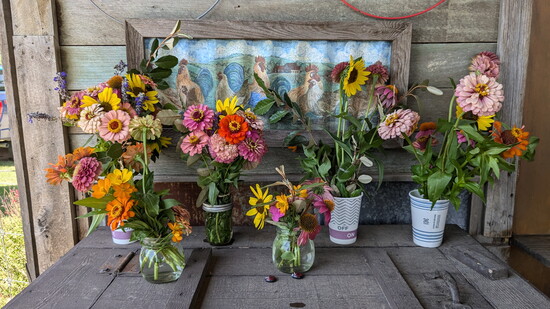Every spring brings two things: cleaning and planting. While I can’t really help with the cleaning task, I can definitely help you prepare your gardens and landscaping for this year’s blooming season.
First, let me introduce myself: I’m Emily, the Farm Manager at Herff Farm of The Cibolo Center for Conservation. Over all the years of farm and garden experience, my passion for growing plants has grown that much deeper. I earned my agriculture degree through Austin Community College and my bachelor’s at Texas State University with a concentration in horticulture. As the Farm Manager at Herff Farm, I oversee our many agricultural projects promoting regenerative practices focused on increasing biodiversity, improving soil health, water efficiency, and resilience to climate change. I’m also committed to educating the community through workshops, community partnerships, and hands-on activities. This dedication to conservation has enabled the farm to flourish, providing locally grown produce, supporting wildlife habitats, and upholding ecological stewardship.
I’d love to meet you at the Teaching Garden at Herff Farm, a one-acre tract that serves as an open space for everyone to learn about farming and gardening. Together, we engage in agriculture and deepen our knowledge of plants through hands-on experiences like workshops, field trips, and more. When you visit, you’ll learn practical farming and gardening skills, discover new plant varieties, and develop a greater appreciation for sustainable agriculture—all things that will help your plants at home flourish, too. Let’s dig in!
cibolo.org | 830-249-4616 | 33 Herff Road.
Planting Tip #1
Seeding
Seeding is an essential part of planning and preparing your spring garden. You can start sowing seeds as early as January by keeping them indoors under grow lights. Once March arrives, you can transplant the sprouts into your garden. This is a lovely journey to understand seeds and germination.
Planting Tip #2
Pruning
Pruning plants while in dormancy during winter or early spring is a great way to encourage healthy new growth in your garden. Pruning can help the plants conserve energy and avoid stress. By removing dead or damaged wood, you allow the plants to focus their energy on producing fresh growth each year.
Planting Tip #3
Healthy Soil
To have healthy plants, you need to have healthy soil. Soil amendments play the biggest role in creating your spring garden. By adding compost to your garden beds, you can enhance water retention, aeration, drainage, nutrient content, and make the soil more conducive for plant productivity. This makes the soil more fertile, which improves the long-term health of your soil.
Planting Tip #4
Garden Design
Designing a garden for the upcoming spring is an exciting process, and it's a great time to plan for vibrant colors, scents, and outdoor enjoyment. From containers, raised garden beds, or in-ground garden beds, take time to plan the layout of your spring garden.
